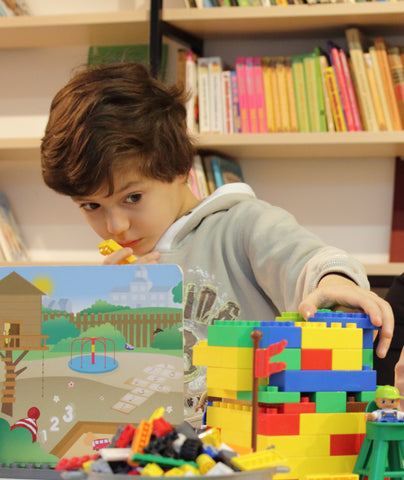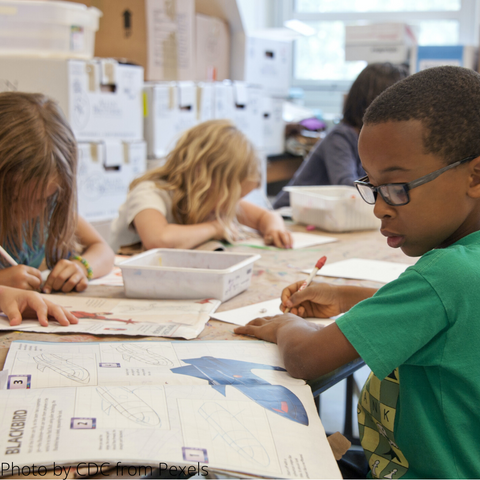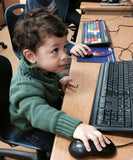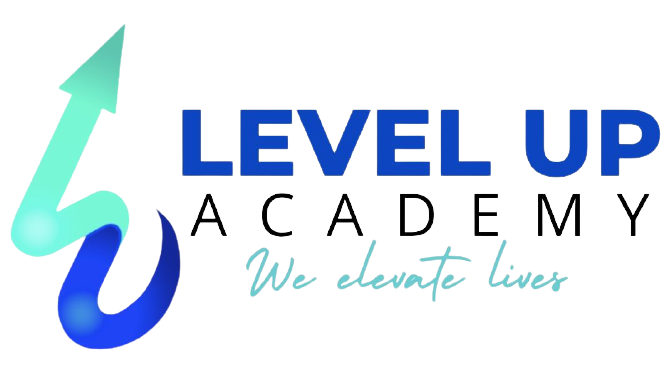5 Tips On How to Teach Young Students Effectively!
Understanding Young Learners
When it comes to teaching, some of the most rewarding and most challenging to teach are young students (2 to 7 years old), particularly if they’re 4 years old or less. These children are still in the early stages of their development. Using Piaget’s Stages of Cognitive Development, these children are in the first half of the preoperational stage where their thinking is highly symbolic and their imagination is active. Though their language use is maturing, moving from baby talk to normal speaking, their thinking is still very intuitive and not logical. They could not yet be asked to give opinions, observations, or even comparisons between things.
The Role Of The Educator
As an educator, your role in teaching them the alphabet, numbers, and vocabulary is to make the entire process of learning feel like play. By engaging their symbolic thinking and imagination, you are helping the student become more proactive in the learning process; and with guidance and proper feedback system, you should be able to happily bring a child from point A to point B in the learning process.
Need help? Check out assisted parent teaching for preschool online tutoring.
5 Tips On How to Teach Young Students Effectively!
4. Give a lot of good feedback.
Photo from johnolearyinspires.com
1. Smile a lot.
When you first meet your student, he or she does not know you. Depending on their attachment style, they may welcome your presence and be happy to interact or shy away or even cry at your presence. Do not be alarmed. Smile and introduce yourself. The more you show yourself to be pleasant and likeable, the closer you get to getting their trust. This is crucial to working with children.
Young students are very sensitive to the emotions of people around them and when you're in a good mood or projecting joy, they are likely to follow your example. Exaggerate your facial expressions and highlight it by pointing your fingers to your face. Give your student a few seconds to process what they are seeing as well. They do not yet recognize expressions as quickly as we do and exaggerations and prolonging expressions help them with that.
But emotions are not only expressed through facial expressions. The way you talk to them also matters a lot. Mind the tone of your voice. Speak slowly, loudly, and enunciate the words as much as you can so they can follow your example.

Photo by Amina Filkins from Pexels
2. Repetition is key.
Young students are new to everything, not only to the content you will teach but to learning as a whole. Focus less on the outcome of the learning and more on the journey.
Refrain from moving from one topic to next in pursuit of finishing a deck of flashcards or finishing a worksheet. Repeat a word several times and have the student repeat after you until they get it.
Don’t instruct; lead by example. And encourage them a lot whether they do things right and even when they make mistakes. When they struggle with something, do not dwell on it too long; a good trick is to move on and come back to it later. Repetition does not only mean repeating it over and over again now, it also means coming back to review things later.

3. Play!
Young students are new to learning and they love to play. They also have short attention spans. When you notice your student's attention drifting away (i.e., they start looking around, try to move away, or start playing with objects within their reach), that's a clear sign you have to change your strategy and get their attention.
Some ways you can do this is by singing, playing a song, playing a game, and making them laugh. Using multimedia to flash photos with bright colors and videos with catchy tunes is a great way to do that.

Photo by Katerina Holmes from Pexels
4. Give a lot of good feedback.
Young students still do not have developed selves. If they're below 5, they very likely do not even have object permanence yet. This means they are highly impressionable and are very reactive to their environment -- you. Your goal is to help build an association between fun and learning.
One of the keys to make learning enjoyable for them is to be encouraging. When a student makes a mistake, do not use the words, "wrong", "mistake", or "bad". Do not shout or frown either. Always focus on what they're doing right and encourage more of it. Instead of pointing out mistakes, focus on their hard work and encourage them to try harder.
Use phrases of encouragement such as "That's a nice try! Let's do it one more time and this time do...." or "Great job! You did that so well. Now, how about we do....".
Avoid using the word "but" when correcting a young student; this word has the ability to undo all the validation you worked hard to give before you delivered your feedback. Use “and” instead. For example, instead of saying “That’s great! But you made a mistake here,” say, “That’s great and here’s how you can do it better.”

Photo by August de Richelieu from Pexels
5. Be patient.
Teaching young students should focus more on their wellbeing than their learning. The learning is an outcome of having them enjoy the process of learning and reinforcing their efforts to learn.
Each student is going to be different, and a technique that works for one student may not work for another. You have to be quick on your feet and change your teaching strategy to maintain their attention and keep learning fun for them.
And most of all, you have to be patient when teaching young students. By focusing on making them have fun and having fun yourself, it’s easier to be patient with a student and focus less on educating them.
Remember, your goal as an educator is less about making them remember words, numbers, and concepts, and more about making the experience of learning fun for them so they will keep coming back for more.

Need help teaching young students? Check out our assisted parent teaching preschool online tutoring program!
Read Our Other Articles here!

Is Online Learning Effective for Kids?
How To Maximize Your Tutoring Sessions

5-Step Guide: How To Be Online Learning Ready

How To Use Online Learning To Suit Different Learning Styles

